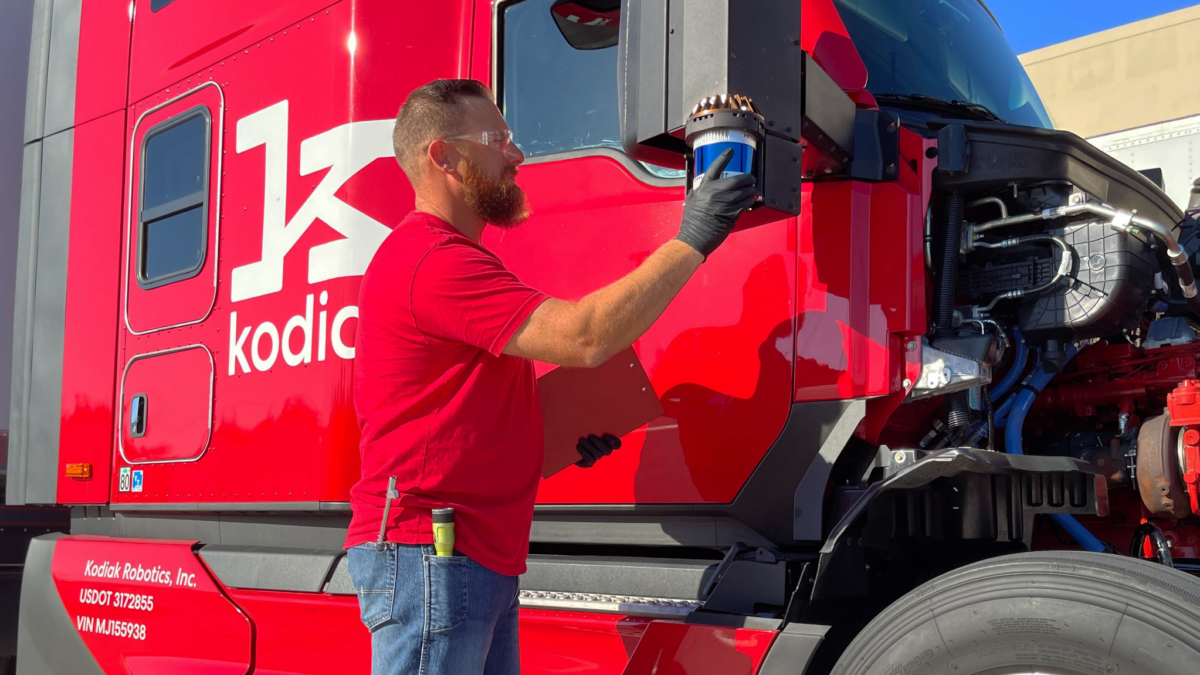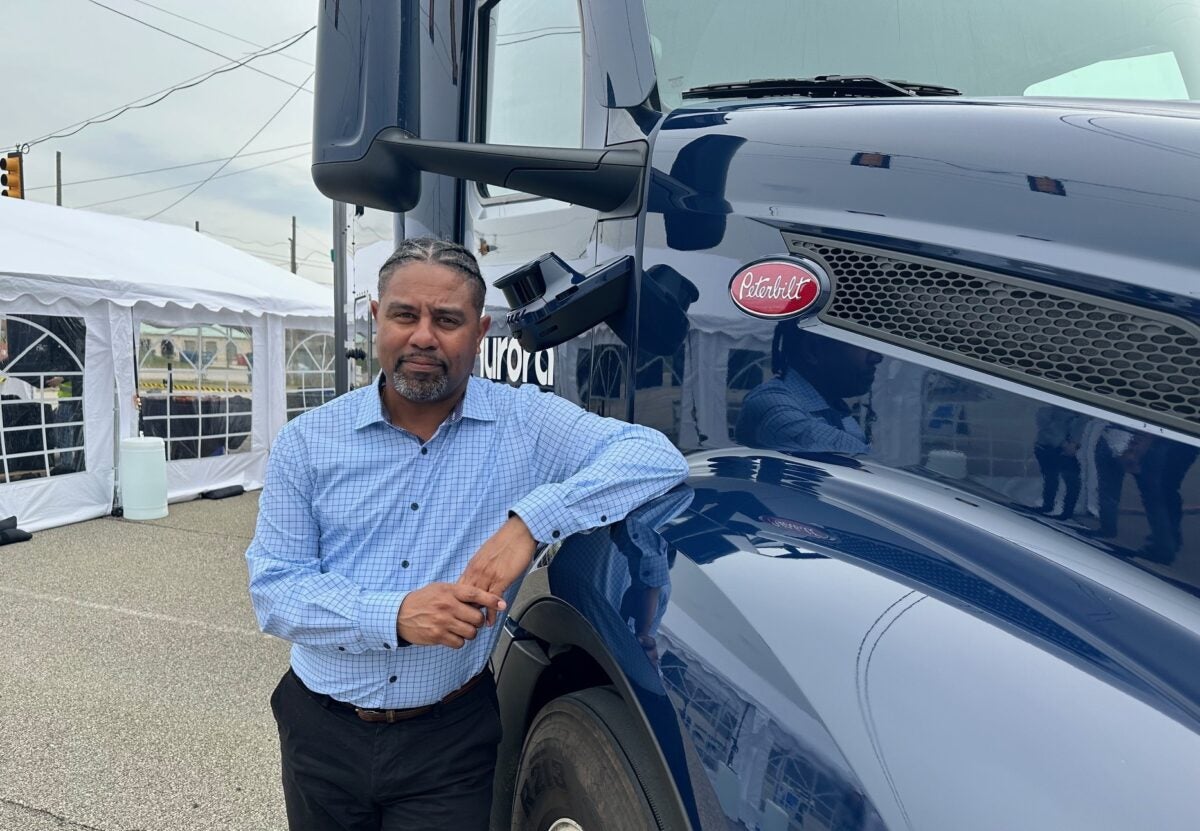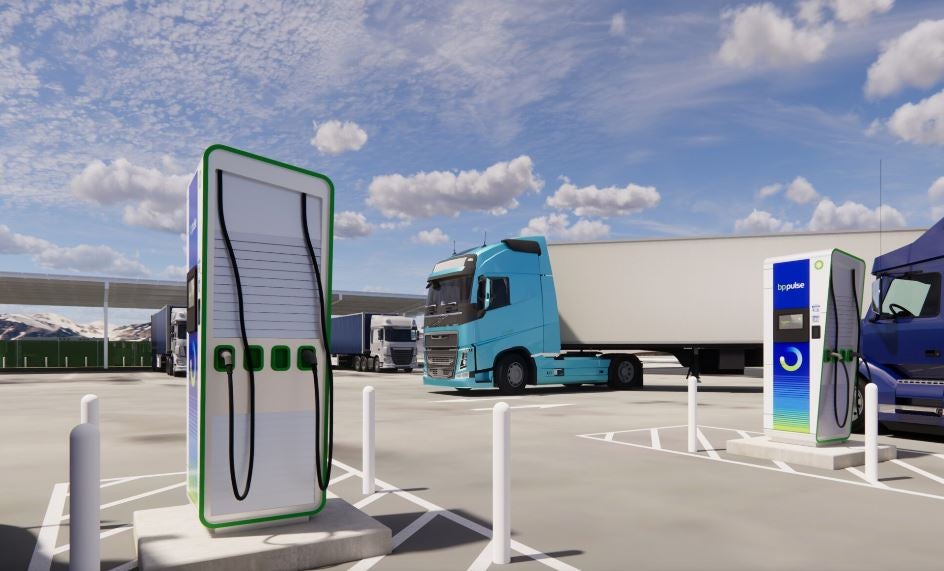As the day nears when driverless trucks join traffic flows on interstate highways, autonomous system developers point to third-party validators to help reinforce their safety messages.
Be safe out there
Aurora Innovation has long claimed safety was imperative in putting Class 8 trucks without human drivers on the roads. Ditto for Kodiak Robotics. And Torc Robotics.
Repeating the message helps. Third-party validation gives the claims heft.
The latest comes from Kodiak, which focuses on autonomous vehicles before they hit the road. Working with the Commercial Vehicle Safety Alliance (CVSA), Kodiak focuses on rigorous pre-trip inspections.
Traditional CVSA North American Standard Level I Inspections require cooperation between drivers and enforcement during the inspection process. That collaboration is missing when no human driver is present. Typically, drivers test indicator lights, step on brake pedals, and demonstrate key safety systems operate properly.
That is, when the drivers are present.
Working with connected truck services provider Drivewyze and the Texas Department of Public Safety, Kodiak in April 2023 launched a pilot of CVSA Enhanced Inspections along the I-45 Corridor between Dallas and Houston. The Safety Message Data Set is seamlessly communicated to enforcement officers.

“This program shows how law enforcement and autonomous vehicle developers can partner to ensure extremely high safety and maintenance standards for self-driving trucks,” Kodiak CEO Don Burnette said at the time the pilot began.
Enhanced pre-trip inspections tougher to pass
Since launching the pilot, Kodiak has performed more than 1,000 enhanced inspections. It found 525 defects, 5% on tractors and 95% Kodiak keeps close tabs on its Kenworth T680 tractors. It is less familiar with the 53-foot trailers they haul. Trailers passed the enhanced inspections 59% of the time compared with a 70% pass rate for a traditional inspection.
Enhanced inspections are zero-defect affairs. Tractor-trailers with a single failure are grounded until a repair is made. About nine in 10 trailer defects get fixed before dispatch. Those that cannot be usually result in an equipment swap.
At 46%, tire issues were most prevalent defects among Kodiak’s 160 enhanced Inspections of customer trailers. Ten percent involved broken or missing lights. Frame issues account for 9%. Brake issues – the subject of two CVSA Operation Airbrake programs this year, including this week – accounted for 4%.
Aurora’s safety quality audit
Aurora recently received its grades from a Safety Management System audit that found the startup is proactive, responsible and thorough in its safety approach.
TÜV SÜD, a global leader in testing, inspection and certification, reviewed policies and programs that directly impact Aurora’s safety. That included evaluating how Aurora’s Safety Management System fosters safety-related decisions, addresses safety concerns, measures organizational safety, and prioritizes the expertise of safety leadership.

“Aurora adapted best practices from other safety-critical industries to implement safety processes throughout their organization,” Bijoy Bhaskaran, mobility division director at TÜV SÜD America Inc., said in a news release.
TÜV SÜD inspected Aurora’s alignment with the Automated Vehicle Safety Consortium Report for Adapting a Safety Management System for Automated Driving System SAE Level 4 and 5 Testing and Evaluation .
“Since Aurora’s founding, we’ve put safety policies and programs at the center of how we develop our self-driving product,” Aurora Chief Safety Officer Nat Beuse said.
Torc’s deliberate safety ethos
Aurora plans to launch 20 Class 8 tractors upfitted with the Aurora Driver system before the end of the year on I-45 in Texas. Kodiak will follow next year after launching driverless trucks in the Permian Basin oil fields.
Daimler Truck independent subsidiary Torc is at a similar state of readiness but won’t pull human drivers until 2027. It wants to launch at scale completely assured of its safety case.
“I have a lot of respect for the other folks in the industry,” Andrew Culhane, Torc chief strategy officer, told me in an interview in November. “Most of us have been in self-driving together for 15-plus years. Everybody has a different definition of what commercialization really means to them.”
Torc founder, former CEO and current Torc director Michael Fleming never minded sounding like a broken record: “Our overarching principle must be safety.”
Former leader TuSimple pays shareholders over safety claims
TuSimple, once a leader in the autonomous trucking market in the U.S., on Monday agreed to pay $189 million to settle a shareholders’ suit claiming it defrauded investors in part by overstating its safety claims.
A preliminary settlement of the proposed class action was filed on Monday in U.S. District Court in San Diego, where TuSimple is based. It requires a judge’s approval. The company, various TuSimple founders and executives, and TuSimple’s bank underwriters, all denied wrongdoing in agreeing to settle.
Shareholders pointed to an April 2022 safety driver-monitored crash on I-10 in Arizona as evidence TuSimple rushed its safety processes to get autonomous trucks on the road.

TuSimple has paid $174 million of the settlement amount into an escrow account while its insurers have paid in $15 million..
The company voluntarily delisted from Nasdaq in January, fewer than three years after raising more than $1 billion in an April 2021 initial public offering. TuSimple was the first autonomous trucking developer to demonstrate driverless trucking, covering 80 miles from Tucson, Arizona, to Phoenix in December 2021.
TuSimple mostly operates in Asia, where it has tested driverless trucks in Japan and China.
What’s next for autonomous trucking legislation in California?
It is deja vu all over again – cap tip to the late Yogi Berra – when it comes to legislation that would all but ban driverless heavy-duty trucks in California.
The state assembly overwhelmingly passed two bills on Thursday that would make it difficult for driverless trucks to operate in the Golden State. Now it is up to Gov. Gavin Newsom to sign them or exercise his veto as he did last year.
One Teamster-back bill requires human operators, also known as safety drivers, in autonomous vehicles weighing more than 10,000 pounds. The union said the jobs of thousands of truck drivers were at risk of being replaced by autonomous driving systems.
A second bill requires enhanced reporting and collection measures for AV roadway violations and other accidents.
Assembly Bill 2286 and Assembly Bill 3061 passed the California Assembly on votes of 31-3 and 30-7 respectively.
In vetoing Assembly Bill 316 in 2023, Newsom said it was unnecessary to assure safe operation of robotaxis and driverless trucks. He effectively chose Big Tech over Big Labor. Both are major constituencies of the Democratic governor.
The Autonomous Vehicle Industry Association urged Newsom to veto both bills. Legislative proponents decided against trying to override Newsom’s veto last year. Instead they brought forward new bills in the current legislative term.
Briefly noted …
With Amply Power – now BP Pulse – and TravelCenters of America both part of energy giant BP, the two broke ground on a medium- and heavy-duty truck truck charging station at a TA outlet in California.

The China Daily reports a first of its kind “super charging hub combining photovoltaic power generation, energy storage, charging, and battery swapping under one roof.”
Nikola has hired former Forward Air CEO Thomas “Tom” Schmitt as its first Chief Commercial Officer, overseeing sales, commercial operations, dealerships, service, customer success and marketing. Schmitt was ousted from the less-than-truckload carrier following a problem-plagued merger with Omni Logistics.
Separately, former Nikola CEO Michael Lohscheller takes on his fourth CEO automotive position Oct. 1 as the top executive at financially struggling Polestar. Lohscheller previously led Opel, Vinfast and Nikola, where he stepped down a year ago for family reasons.
Three years after a cyberattack that led to hundreds of gigabytes of data being auctioned on the dark web, Navistar has hired Robert Oh as its first Chief Digital and Information Officer.
Truck Tech Episode No. 80: Behind the scenes of Cummins’ engine plant in Jamestown, New York
Shawn Hricko oversees the manufacture of more than 500 Cummins’ engines a day at the company’s Jamestown, New York, engine plant. (Photo: Alan Adler/FreightWaves)
Nominations for the FreightTech 25 close at 6 p.m. EDT on Sept. 6. Winners will be announced at the Future of Freight Festival in November in Chattanooga, Tennessee, in November. Here’s a discount offer for F3 tickets.
That’s it for this week. Thanks for reading and watching. Click here to subscribe and get Truck Tech delivered to your email on Fridays. And catch the latest episodes of the Truck Tech podcast and video shorts on the FreightWaves YouTube channel.Send your feedback on Truck Tech to Alan Adler at aadler@firecrown.com.










